3D printing has a vital role to play in what looks set to be the most exciting decade for space exploration since humans first set foot on the Moon.
Our predictions for the 2020s are high: Space tourism will become a reality, the first woman will reach the Moon, a permanent lunar base will be built, exploration of our solar system will boom, the first human mission will get to Mars, and commercial manufacturing in space will begin. Technology will be pushed beyond today’s limits and we’ll see additive manufacturing, including 3D printing, evolve fast to meet growing demands.
The launch systems (rockets), engines, and satellites we send into space are increasingly built using 3D printing and have given rise to the world’s largest and most sophisticated additive manufacturing facilities.
Once in space, 3D printing has several key roles to play: The “zero-g” environment of space orbit opens doors to print materials not possible under the influence of earthly gravity, parts and spares can be printed on-demand, and structures can be built that wouldn’t survive the stresses of launch.
Even further afield, on the surfaces of the Moon and Mars, structures need to be built using locally sourced materials, and large-scale 3D printing is a key part of that solution, too.
We’ll look at each of these areas in more detail below and choose representative projects, highlighting the key role of 3D printing and flagging what we should look out for in 2021 and beyond.
Getting to Space
Lofting anything into orbit and beyond costs big dollars, and the heavier the payload, the bigger the bill.
3D printing is revolutionizing launch vehicle design by reducing component counts, integrating complex geometry into lightweight structures, and speeding the whole design and manufacturing cycle. These are all vital in the relentless drive to lower the cost per kilogram launched into space.
NASA, the European Space Agency (ESA), and the space agencies of Russia, China, and India are all actively exploring, and already using, 3D printing to help meet their exploration, scientific, security, and commercial goals. Rocket engines are a particular focus and 3D printed parts are already playing key roles in virtually every new satellite launch. Both SpaceX and Boeing, for example, have literally hundreds of 3D printed components in their new manned capsules.
3D printing has also opened the door to dozens of private start-up firms to move quickly with new solutions, from entire launch systems to tools and equipment used by astronauts.
Let’s look at four representative projects covering the spectrum of solutions touched on above.
Relativity Space: Terran Rocket & Stargate Facility
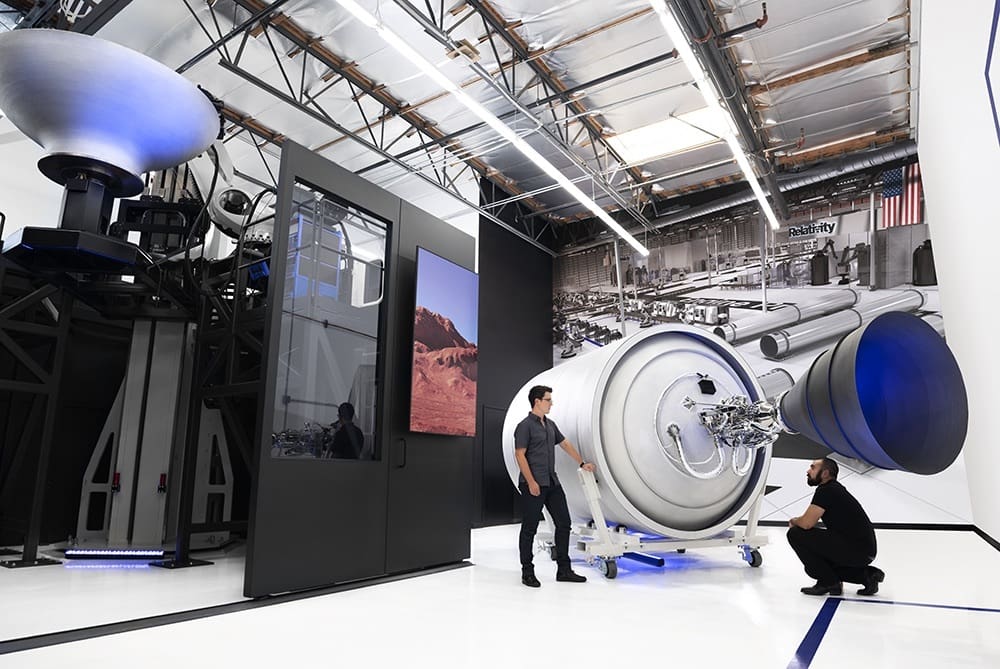
Relativity Space are leading the development of what they call the software-defined factory of the future. They are fusing additive manufacture, artificial intelligence, and autonomous robotics to build Terran, the world’s first 3D printed rocket, powered by Aeon engines that are also mostly 3D printed.
Their Stargate manufacturing facility houses the world’s largest metal 3D printers and use directed energy deposition and patented alloys to make the bodies of their rockets. 3D printing allows them to rapidly design integrated components that reduce the part count by 100 times compared to traditional launch vehicles. This also saves weight and improves reliability, both of which are hugely important to the economics of launching into space.
The technology developed by Relativity is transferrable to other manufacturing. The way they integrate 3D printing with automated assembly and smart design is likely to have a huge impact on the aerospace industry and beyond.
- Company: Relativity Space
- Notable technology: World’s largest metal 3D printers and smart factories
- Watch for: The launch of Terran, the world’s first 3D printed orbital launch vehicle, in 2021
Rocket Lab: Rutherford & HyperCurie Engines
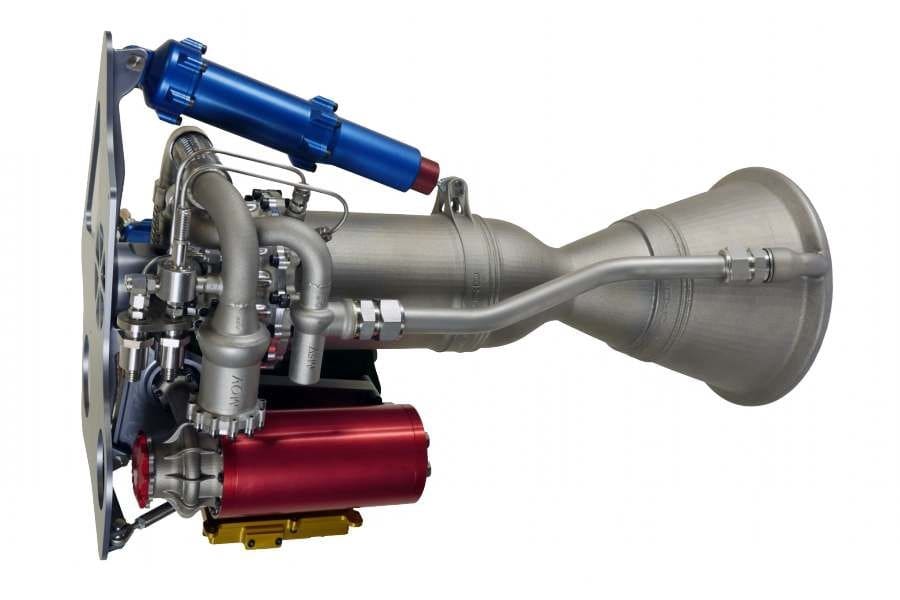
Rocket Lab is a pioneering leader in commercial satellite launches. Their founder, Peter Beck, hailed 3D printing as “a technology that has been revolutionary in space propulsion” and he can back that up with impressive results.
Their Rutherford rocket engine was first tested in late 2016, and since then, over 200 of the game-changing models have been produced. Their combustion chambers, injectors, pumps, and main propellant valves are all 3D printed using electron-beam melting. The resulting engine is simple, reliable, and light (only 35 kg or 77 lb), making them ideal for low-cost launches into space. And beyond Earth’s atmosphere, their new Curie and HyperCurie thrusters are built using the same principles.
These engines have already powered over 20 launches. In 2021, they’ll be behind the first private Moon mission to place an experimental navigation CubeSat into lunar orbit for NASA, a clear sign that the technology is mature and ready for the big stage.
- Company: Rocket Lab
- Notable technology: Electron-beam 3D printed engines
- Watch for: The first private Moon mission in 2021 and a private Venus exploration mission in 2023 – all powered by 3D printed engines
NASA: RAMPT
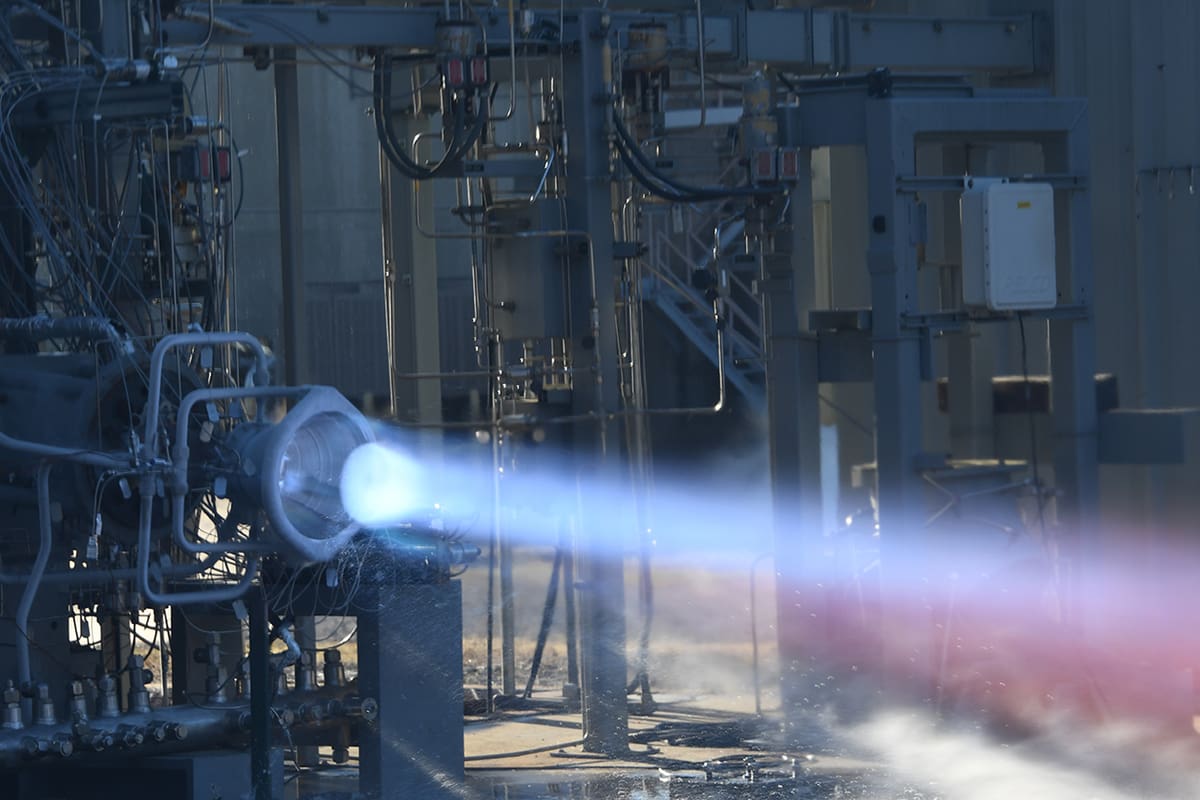
NASA’s own 3D printing efforts are a bit behind in terms of technology but are implemented on a much larger scale. Their Rapid Analysis and Manufacturing Propulsion Technology (RAMPT) project is advancing the development of additive manufacturing techniques to 3D print enormous rocket combustion chambers, thrust chambers, and nozzles. These may look simple but are actually very complex and traditionally take a long time to manufacture – often more than a year.
For example, the engine nozzles are laced with tubing through which fuel is passed to pre-heat before combustion. 3D printing allows these to be made as a single component with all of the channels built in, enabling significantly shorter manufacturing times, lower costs, and lighter parts.
Among the technologies being explored are large-scale “blown-powder directed-energy deposition” 3D printing and new printable copper-based alloys.
Progress has been rapid and we might look forward to seeing this included in the Artemis project that will return NASA to the Moon, infinity, and beyond!
- Company: NASA
- Notable technology: Large-scale blown-powder directed-energy deposition printing
- Watch for: Announcements on production use during 2021
SpaceX: Starman Helmet
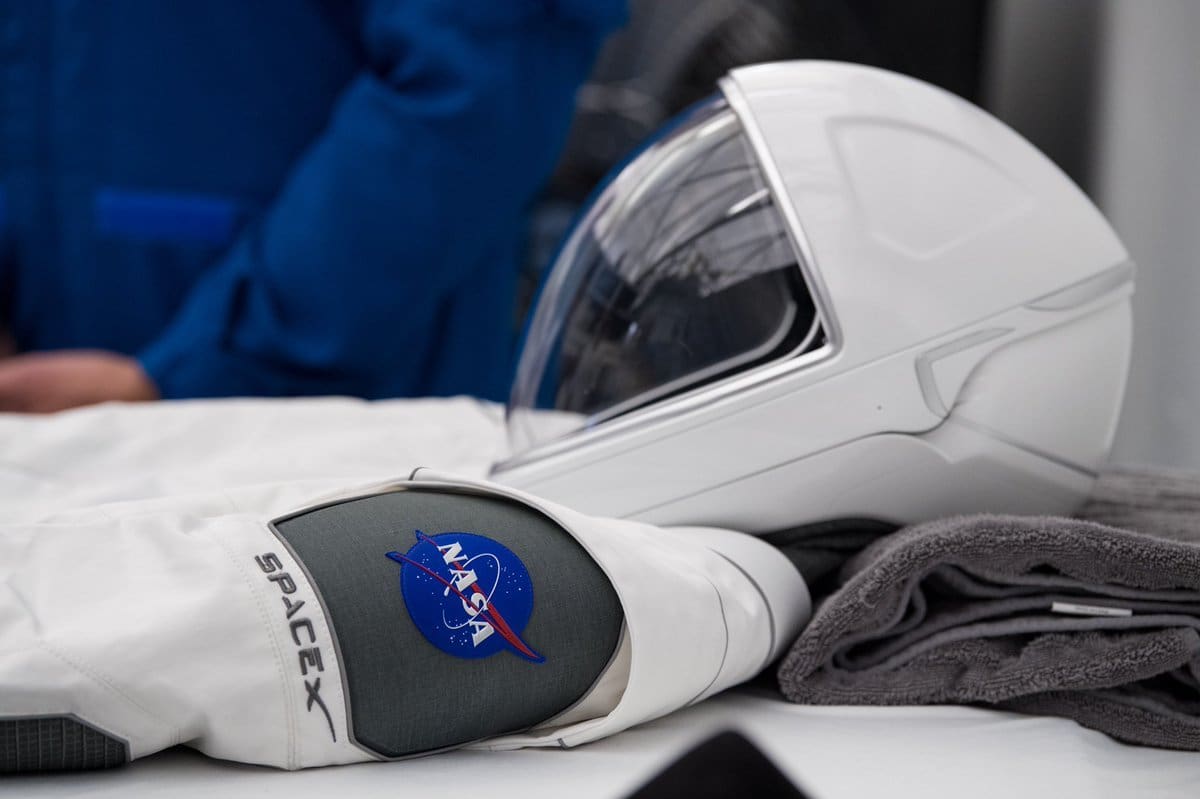
The “Starman” spacesuits worn by astronauts for SpaceX Crew Dragon missions have been getting a lot of attention.
Their look was conceived by Hollywood costume designer Jose Fernandez, who has worked on Captain America and Batman v Superman, but they serve a much more important role than just looking cool! They protect the crew from fire or depressurization incidents, regulate temperature and oxygen levels, and are individually tailored for comfort.
SpaceX has kept details of much of the underlying technology private, but a spokesperson noted that “the helmet is custom manufactured using 3D printing technology and includes integrated valves, mechanisms for visor retraction and locking, and microphones within the helmet’s structure.” Speculation is that the material is PEKK, a variant of PEEK that offers high heat and chemical resistance and the ability to withstand large mechanical loads.
Hopefully, SpaceX will share more info on production in the year ahead. In the meantime, you can print your own replica at home.
- Company: SpaceX
- Notable technology: PEKK 3D printed – to be confirmed
- Watch for: Details of this and other astronaut kits to be made public in 2021
In Space
3D printing in space brings its own challenges and opportunities. Technologies that work in an environment with gravity may not function in zero-g. On the other hand, the absence of gravity enables new solutions that may not work on our planet’s surface.
Experiments with multiple 3D printing methods and materials have been carried out on the International Space Station (ISS) for over five years. The results have been very positive, and so new, advanced projects are underway to extend the materials, capabilities, and scope. There are three main areas of focus in a broad field known as “in-space manufacture” (ISM) or “on-orbit manufacture” (OOM).
The first is to use 3D printing to manufacture items in orbit rather than to launch them from the surface. This reduces the need to keep an inventory of spares and allows astronauts to respond faster to new requirements. An interesting twist is to recycle materials, including the packaging of objects sent into space, into the feedstock (filament) used by 3D printers. The ISS already has tested “Refabricators” to recycle plastic for this purpose.
The second is to manufacture items that benefit from printing in no gravity. Among the most interesting avenues being explored is bioprinting, where globular forms of liquid can be better manipulated to create complex bio-structures, and ceramic printing, where the absence of gravity-induced stress at manufacture can result in stronger products.
An area of growing interest is how to manufacture structures in space that are too large or too flimsy to survive launch. Large items printed in space don’t have to support their own weight or be designed with complex and heavy folding and deployment mechanisms. Combined with other technologies (e.g. robotic assembly), this is a key component of what is known as “on-orbit servicing, assembly, and manufacture” (OSAM).
Every major space agency is exploring these areas and there are many projects underway, from which we’ve chosen five to highlight key areas. As NASA’s 3D printing R&D team says: “Make it, don’t take it!”
Made in Space: Ceramics Manufacturing Module (CMM)
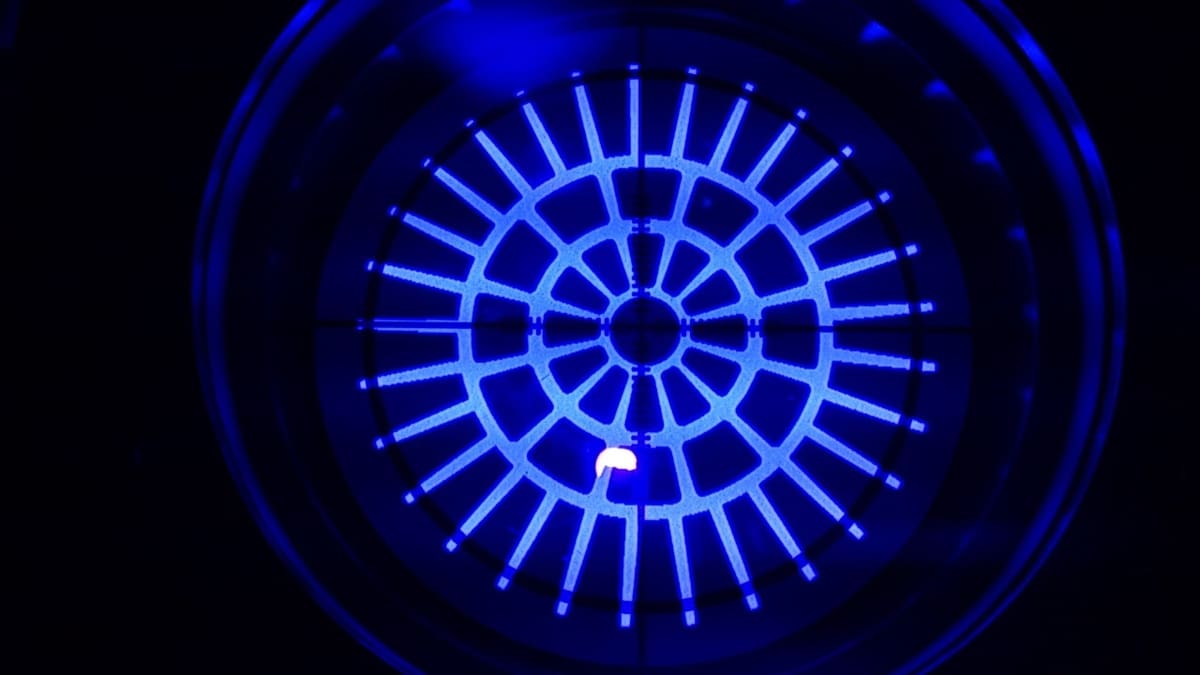
Wide ranges of plastic, metal, and carbon fiber 3D printing have been tested successfully in space. Ceramic printing, however, has brought particular challenges and also new opportunities.
In 2020, the ISS tested a ceramics manufacturing module (CMM) using SLA-based ceramic 3D printing. The idea is that by printing in a zero-g environment, the resulting product is subject to fewer and more evenly distributed internal stress and so can be made lighter and stronger. The first test pieces have been created and are undergoing analysis.
If successful, there’s a potential market for ultra-high-performance turbine blades built in a custom-designed orbiting manufacturing plant. On long missions, the same technology could also repair heat shields and other essential parts.
- Company: Made in Space
- Notable technology: SLA ceramic 3D printing
- Watch for: Plans for scaling up space-based production of high-value ceramic components
Techshot: BioFarbrication Facility (BFF)
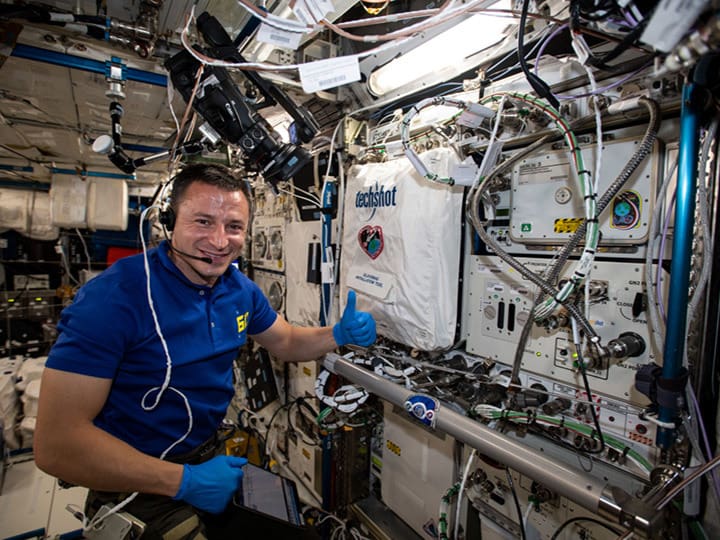
Bioprinting uses “bio-inks” based on human cells and the nutrients and materials needed to regrow body tissue such as skin, bone, and cartilage. The space-based applications of this technology are of interest for two reasons.
The first is that micro-g or zero-g environments allow types of printing not possible on Earth. In the future, replacement tissue and organs might be printed in orbit and transported back to the surface for use. The second is for the medical treatment of astronauts and explorers during self-sustaining, long-term missions.
Last year, the BioFabrication Facility (BFF) onboard the ISS produced a 3D printed human meniscus as well as other test materials. Very encouraging results are shaping an additional mission using the 3D bioprinter in conjunction with other bio-facilities on the ISS.
The practical and commercial use of bioprinting in space has significant potential benefits and, although some way off, progress is rapid and worth watching.
- Company: Techshot
- Notable technology: 3D bioprinting
- Watch for: Next-generation BFF to be launched in 2021 or 2022
Tethers Unlimited: OSAM-1 (SPIDER & MakerSat)
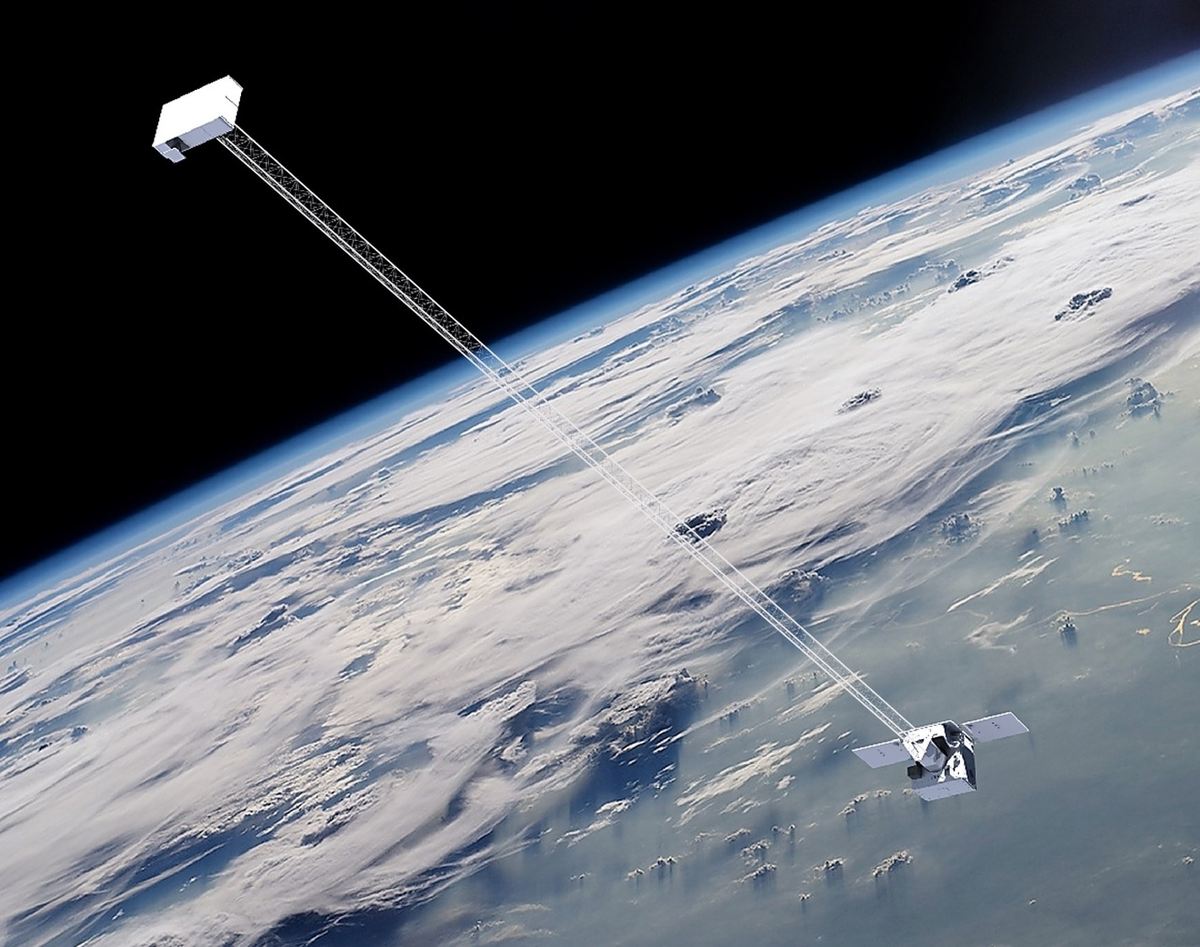
The development of on-orbit servicing, assembly, and manufacture (OSAM) solutions are potentially critical to future moon and Mars missions, and both China’s space administration and NASA are backing multiple missions to develop this.
NASA’s OSAM-1 mission will refuel and refurbish an existing satellite and test important technology as it does so. On board will be a payload called the Space Infrastructure Dexterous Robot (SPIDER), which is a great initial example (as well as a pretty cool and appropriate acronym) of the combination of robotics and additive manufacture we expect to see much more of in the future.
SPIDER will hold a module known as MakerSat which will 3D print a 10-meter-long carbon fiber composite structure, regarded as the space equivalent of 2x4s, for construction. If successful, the concept will be multiplied to create huge space structures including vast antenna arrays and enormous fields of solar panels.
- Company: Tethers Unlimited
- Notable technology: Carbon fiber composite structural beam printing
- Watch for: Payload to be completed in late 2021 for launch in 2022
Made in Space: OSAM-2 (Archinaut One)
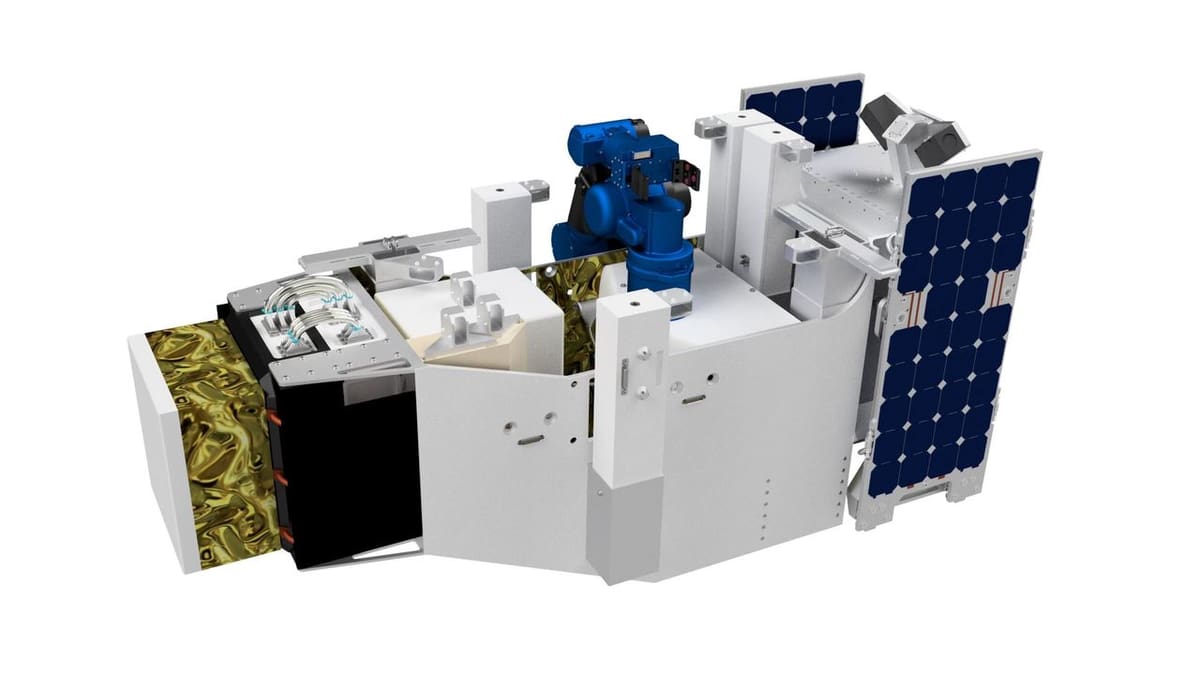
Another NASA mission, OSAM-2, will test part of a concept called Arichnaut developed by orbital 3D printing pioneers Made in Space. Archinaut has evolved as a family of additive, robotic, and AI solutions aimed at building large structures in zero-g.
This initial mission will print supports to unfurl flexible solar panels on both sides of a satellite. The supports will be printed using an undisclosed technology in combination with a robotic arm to make electrical connections and move the printing mechanism, among other uses. For the same weight as traditional structures, it is expected to generate five times more power.
And since we’re visiting the world of NASA, we can introduce yet another acronym. This project is an example of an extended-structure additive manufacturing machines (ESAMM). Watch this space!
- Company: Made in Space
- Notable technology: Details not disclosed
- Watch for: Payload complete in 2021 for launch in 2022 by Rocket Lab
Tethers Unlimited: Next-Generation OrbWeaver
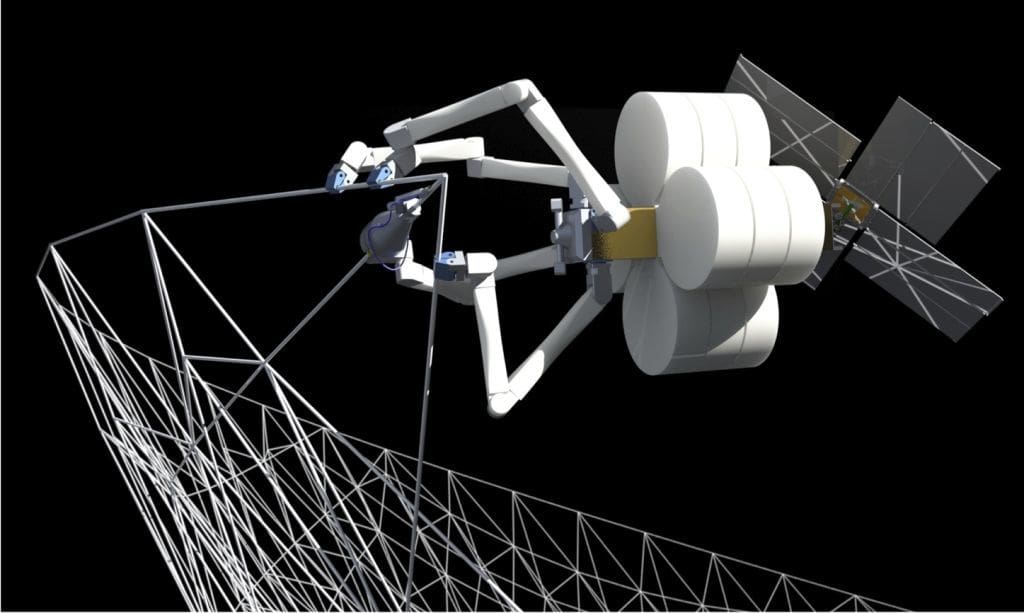
Our last “project” in this area is actually more speculative and conceptual at this stage, but there’s a lot of interest and the “word on the street” is that we may see pilot work in 2021 or 2022.
A 2018 DARPA-funded project (OrbWeaver) to recycle space materials that would otherwise burn up on re-entry envisaged a small machine to “chew up” the metal parts and use them to print or cast new structures. On the ISS, two “Refabricator” projects have successfully trialed the recycling of plastic materials into 3D printed objects.
Extending that idea to the metal materials in space junk, defunct satellites, or expended launch vehicles (rather than spending many thousands of dollars lifting new materials into space), is both appealing and intriguing. At the ground level, contracts are being awarded to explore turning scrap metal into 3D printing raw material, so technology in this field is sure to advance quickly.
NASA and the Russian agency Roscosmos are very interested in the idea and with so many other developments in this field, we may see the rebirth of OrbWeaver or similar projects before long.
- Company: Tethers Unlimited and others
- Notable technology: Confidential
- Watch for: Possible experimental project to recycle metal as feedstock for printing in space
On the Moon and Mars
NASA and their Chinese equivalent, the CNSA, have both committed to establishing permanent moon bases, with an eye to visiting and living on Mars.
Living and working in such remote locations requires more materials, fuel, and water than can be realistically or economically transported from Earth. Making use of what can be sourced locally becomes vitally important, a practice known as in-situ resource utilization (ISRU). This is especially true for the large-scale habitation and the other structures required for a sustainable base.
Pioneering work by the ESA laid many of the (3D printed!) foundations for structures using “regolith” (the thin deposit of dust, rock, and minerals found on the Moon’s surface) as far back as 2013. Subsequently, NASA ran a series of well-publicized contests to design 3D printed lunar and Martian dwellings.
Although a long way from actual deployment, practical research to advance the technology continues and we’re already seeing spin-offs for terrestrial applications.
AI SpaceFactory: Marsha
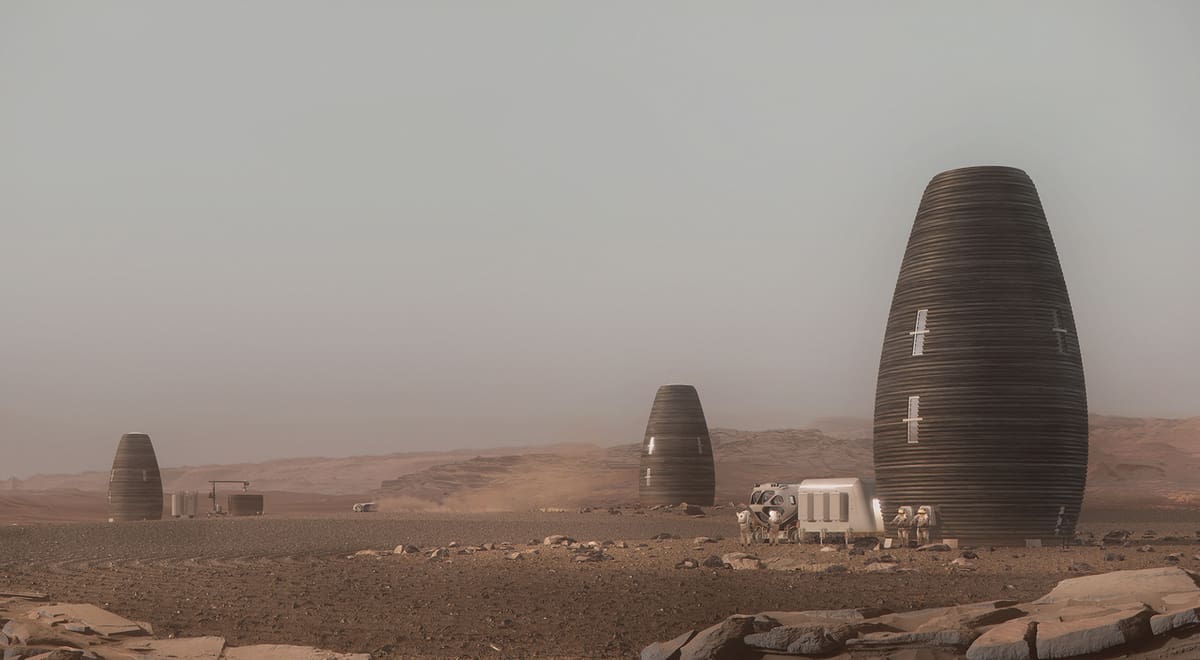
AI SpaceFactory won NASA’s third 3D printed habitation contest with their brilliant “Marsha” design. This was more than a conceptual exercise; it gave deep technical consideration to building on a hostile, alien environment millions of miles away.
“Where structures on Earth are designed primarily for gravity and wind, Martian conditions require a structure optimized to handle internal atmospheric pressure and thermal stresses.” Super-strong radiation-resistant buildings are called for and an innovative mixture of basalt fiber extracted from Martian rock and renewable bioplastic processed from plants grown on Mars was developed to be 3D printed. The resulting material was certified to be two to three times stronger than concrete in compression, and five times more durable than concrete in freeze-thaw conditions.
Many lessons were learned that have been factored into further research projects and designing a future Mars mission. They’re also already finding applications on Earth, with terrestrial versions becoming commercially available.
- Company: AI SpaceFactory
- Notable technology: Regolith structural 3D printing
- Watch for: Terrestrial spin-offs for 3D printed dwellings
Icon: Olympus
Although still a long way off, NASA (and other agencies) are keen to continue developing and testing ISRU solutions for structures and dwellings on both the Moon and Mars. In late 2020, a large contract was awarded to Icon Technology to develop an “off-world construction system”.
The resulting project is Olympus that’s being designed in conjunction with two award-winning architecture firms: Bjarke Ingels Group (BIG), renowned for their iconic international architecture, and Space Exploration Architecture (SEArch+), a company recognized on a global scale for its innovative “human-centered” designs for space exploration.
It’s early days yet but we can expect to see important developments in Icon’s Vulcan 3D printer designed for construction applications, new advanced materials technology, and other associated automation including robotics.
- Company: Icon
- Notable technology: Regolith structural 3D printing and robotic assembly
- Watch for: Updates on new technology and designs from 2021 onwards
Lead image source: Tethers Unlimited via Space
License: The text of "3D Printing in Space: 10+ Projects to Watch in 2021" by All3DP is licensed under a Creative Commons Attribution 4.0 International License.
